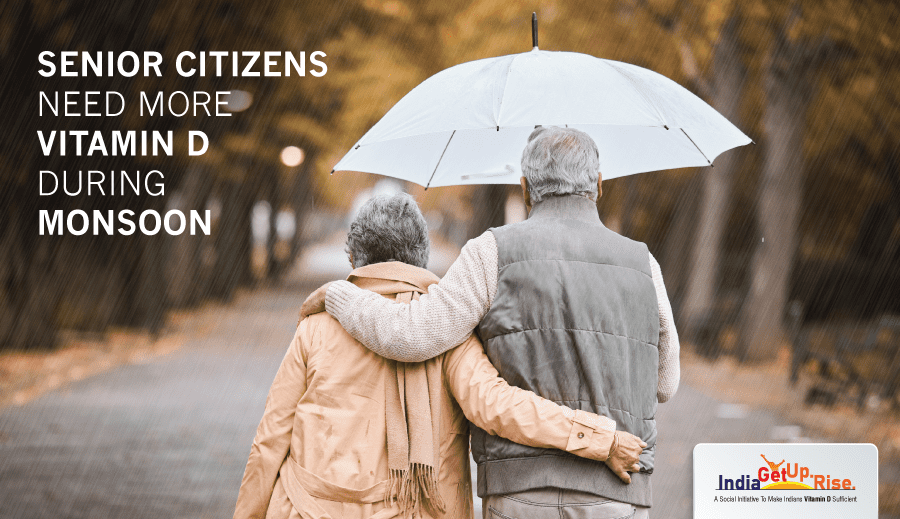Vitamin D deficiency is widespread in the geriatric population. While vitamin D deficiency is prevalent in about 50% of healthy older adults, the prevalence in the geriatric population with hip fractures increases to over 80%. This is partly due to the fact that sunlight is unreliable as the main source of vitamin D. In addition to insufficient sun intensity during monsoon, skin ageing plays an important role; it causes a 4-fold reduction in the skin’s own vitamin D production capacity during sunshine exposure in older adults compared with younger people.


Immobility and institutionalization are additional risk factors for vitamin D deficiency in the geriatric population. At the same time, vitamin D deficiency (< 20 ng/ml) increases parathyroid hormone levels and thus promotes bone loss and the risk of fracture. Severe vitamin D deficiency (< 10 ng/ml) may also lead to reversible muscle weakness resulting in an increased risk of falling.
Since falls affect at least every second geriatric population and hip fractures increase exponentially after the age of 75, needs correction of vitamin D. Most importantly Calcitriol directly or indirectly regulates over 200 genes including those involved in renin production in the kidney, insulin in the pancreas, the release of cytokines from lymphocytes, production of cathelicidin by macrophages, and the growth and proliferation smooth muscle cells and cardiomyocytes.
The main cause of aging-associated vitamin D deficiency is low vitamin D production. As we age, there is a reduction in the skin’s concentration of 7-dehydrocholesterol. Specifically, for each decade past the age of 40, there is approximately a 10 to 15% decrease in the level of 7-dehydrocholesterol.
Additionally, there is about a 35% decrease in intestinal calcium absorption after the age of 70. This decrease is even greater in women because of reduced fractional calcium absorption and estrogen changes after menopause with increased urinary calcium losses.
Other causes of ageing-associated vitamin D deficiency are related to poor vitamin D and calcium nutrition. With age, comorbidity must also be considered with a special focus on renal and liver insufficiency. It is important to have a proper level of Vitamin D with ageing. The following are some commonly referenced guidelines for vitamin D levels in older individuals:
The Endocrine Society’s Clinical Practice Guidelines suggest a higher target level of 30 ng/mL (75 nmol/L) for adults, including older individuals, to maintain bone health and overall well-being.
However, it’s always best to consult with a healthcare professional who can assess an individual’s specific circumstances and provide personalized recommendations for vitamin D supplementation and monitoring. They can consider factors such as age, overall health, sun exposure, dietary intake, and other medical conditions to determine the appropriate target vitamin D levels for older individuals
Always ensure to check with your Doctor / Healthcare / GP before starting with any new medication or therapy.
Take the free Vitamin D Test – Click here: Vitamin D Self Examination


Pingback: Building Strong Bones with Vitamin D